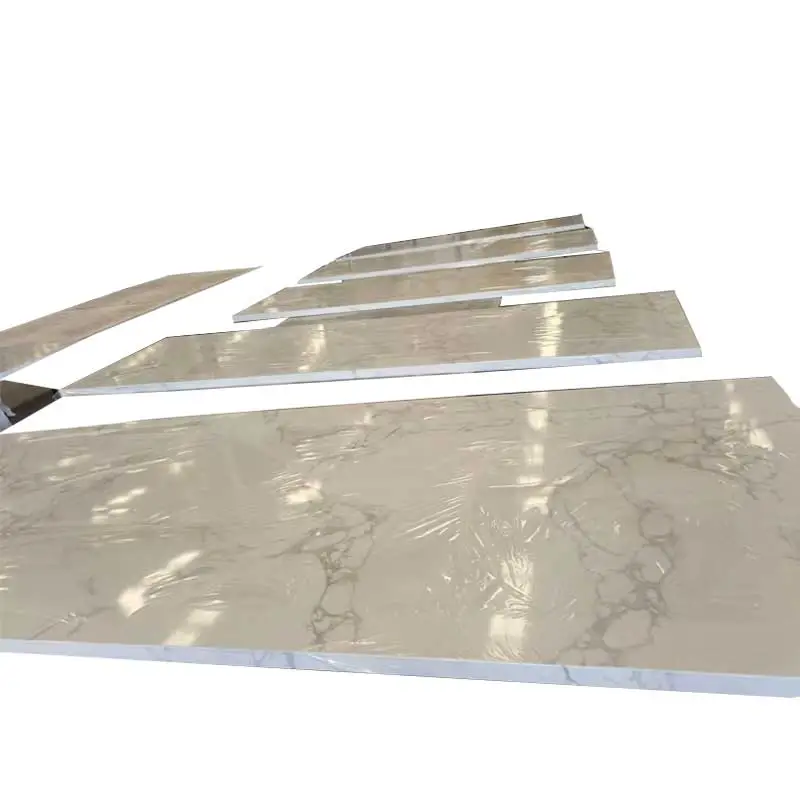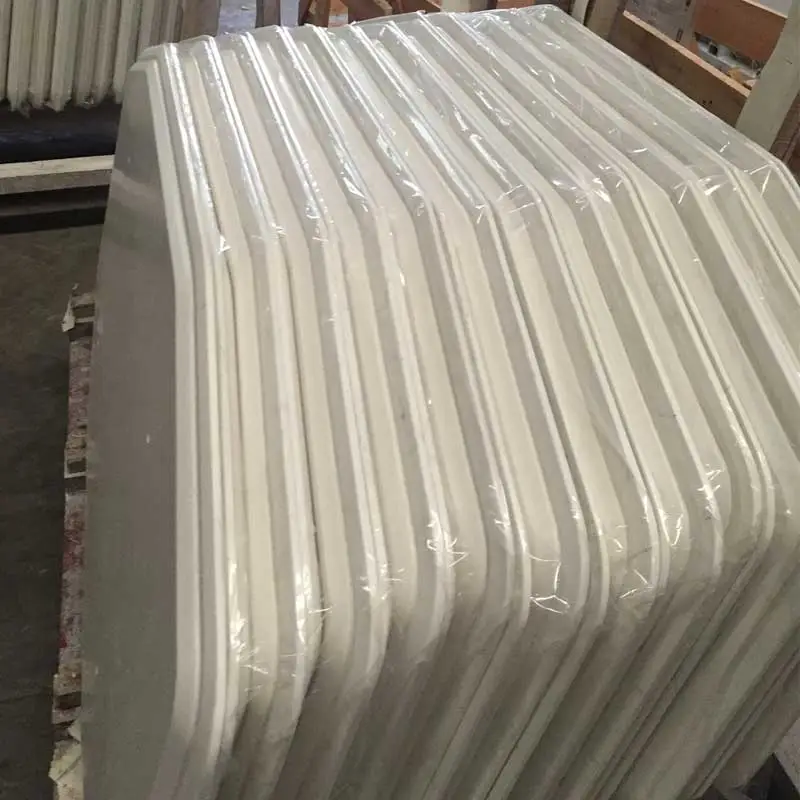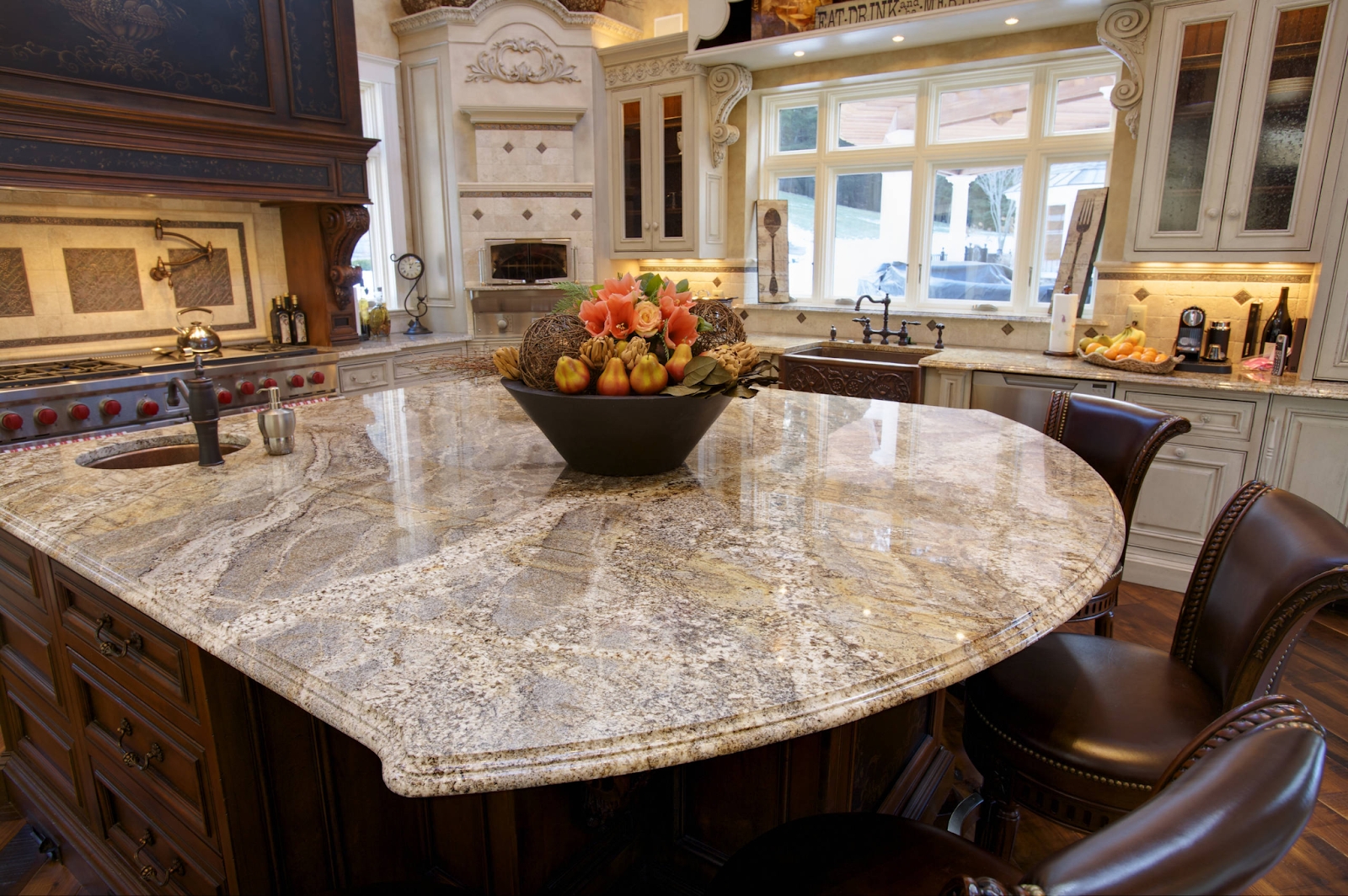Quartz countertops are a popular choice for modern kitchens. Their durability, ease of maintenance, and rich colors and textures make them a top choice for home design. However, the beauty of quartz countertops depends not only on their materials and colors, but also on the edge treatment. Choosing the right edge profile not only affects the overall aesthetics of the kitchen, but also involves safety of use and ease of maintenance.
This article will take a deep dive into the various options for quartz countertop edges, as well as the key issues to pay attention to when purchasing and maintaining them, so that you can have a comprehensive understanding of quartz countertop edges.

What Is A Countertop Edge?
In simple terms, the countertop edge is the "corner" of the countertop. It is not only one of the most conspicuous parts of the countertop, but also carries the function of protecting the countertop, enhancing structural stability, and improving overall beauty. The shape and treatment of the edge directly affect the style of the countertop. From modern simplicity to classical elegance, various edge profiles have their own unique charm.
Understanding Quartz Countertop Edge Profiles
The edge treatment of quartz countertops can be said to be an art in kitchen design. Different edge profiles not only affect the visual effect, but also determine the safety and comfort of the countertop in daily use. Let's take a closer look at some common quartz countertop edge types.
Beveled Edge
Beveled edge is a common and classic edge treatment method, characterized by the edge being cut at a slight angle, usually between 20 and 45 degrees. The advantage of beveled edge is that it can make the thickness of the countertop appear thinner and more delicate, while also visually extending the length of the countertop.
This edge treatment method is particularly suitable for modern minimalist style kitchens, because its clean and neat lines fit well with modern design concepts. On the other hand, beveled edge is also very convenient when cleaning, because there are no extra concave and convex structures, and dirt and water stains are not easy to accumulate.
Bullnose Edge
The bullnose edge, as the name suggests, is to process the edge into a smooth rounded profile, just like the nose of a bull. This edge treatment method is very suitable for kitchens with children in the family, because it eliminates sharp corners and greatly reduces the risk of collision injuries.
Bullnose edge is often used in traditional style kitchens, with a classic and warm feeling. Its sleek lines are not only safe, but also add a softness to the countertop, making the kitchen appear more intimate and comfortable.
Augie Edge
The Augie edge is a complex and decorative edge treatment, usually composed of two curved profiles, forming a graceful S-shaped curve. This edge design originated from the classical European architectural style and has now become a classic choice in high-end kitchen countertop design.
The elegant curves of the Augie edge add a sense of luxury to the kitchen, which is very suitable for families who want to create a luxurious and noble kitchen. Although it is slightly more complicated to maintain, the beauty and uniqueness of the Augie edge are unparalleled.
Straight Edge
The straight edge is one of the most basic and popular edge treatments for quartz countertops. It is characterized by a straight edge without any modifications or curves, showing a simple and modern beauty. Straight edges are suitable for almost any style of kitchen design, especially those families who pursue minimalism.
Another advantage of the straight edge is that it is relatively simple to manufacture and install, and the cost is also relatively economical. Therefore, for families with limited budgets or pursuing a simple style, the straight edge is undoubtedly an excellent choice.
Half-round nose Edge
A half-round nose edge is a design that is between a straight edge and a bullnose edge, with the edge showing a semicircular arc. This edge treatment retains the simplicity of a straight edge while adding some soft curves, suitable for families who want to find a balance between modern and traditional.
The half-round nose edge performs well in both safety and aesthetics. Similar to the bullnose edge, it reduces the risk of sharp corners, but is more modern than the bullnose edge, making it a very practical and versatile design choice.
Waterfall Edge
A waterfall edge is a very eye-catching design, usually referring to the edge of the countertop extending vertically to the ground, like a waterfall pouring down. This design not only greatly enhances the visual impact of the countertop, but also brings a sculptural beauty to the kitchen.
The waterfall edge is particularly suitable for designs that want the kitchen countertop to be a visual focal point, suitable for open kitchens or spaces with islands. Although this design may be expensive in cost and installation, the aesthetic value it brings is undoubtedly amazing.
Double Bevel Edge
Double bevel is a unique edge design that combines two bevels to make the edge look more complex and refined. This edge design adds some decorativeness while maintaining the simple style of the bevel, which is very suitable for families who want to show their unique taste in details.
Double bevel is often used in high-end custom countertops, and its complex lines and three-dimensional sense can add a unique personality to the kitchen. However, due to its more complicated production process, the cost of double bevel is relatively high, but for those who pursue perfection in details, it is a worthy investment.
DuPont Edge
DuPont edge is a unique edge design that combines the characteristics of straight edge and semicircular edge. The upper part is straight and the lower part presents a soft semicircular shape. This edge design retains the modern feel of the straight edge and adds some softness of the curve, making the countertop more diverse.
DuPont edge is very suitable for those who want to incorporate multiple elements into the kitchen design. It can add a sense of layering to the countertop and form a unique transition effect visually, which is very suitable for matching with modern or traditional style kitchens.
Eased Edge
Eased edges are a design full of flow, with an irregular natural curve on the edge, like the undulations of the sea waves. This edge treatment gives a natural and casual feeling, which is very suitable for families who advocate natural style or want to create a unique kitchen space.
The design inspiration of the eased edge usually comes from the form of nature, such as waves, mountains or rivers, so it has a strong visual sense of movement and artistry. Although this edge design is more complicated to install and maintain, the unique beauty and natural atmosphere it brings are unmatched by other edge treatments.

Choose the Right Quartz Countertop Edge
Choosing the right quartz countertop edge is not only an aesthetic issue, but also involves safety, maintenance difficulty and harmony with the overall kitchen design. Therefore, before making a decision, you need to consider multiple factors.
Safety Issues
Safety is one of the factors that need to be prioritized when choosing a quartz countertop edge. For families with children or the elderly, choosing a smooth or sharp edge such as a bullnose edge, a semi-circular nose edge or an eased edge can greatly reduce the risk of injury caused by accidental collisions.
In addition, if the kitchen space is relatively compact, avoid choosing overly complex or prominent edge designs, such as Augie edges or double bevels. Although these designs are beautiful, they may increase the risk of bumps in small spaces.
Maintenance and cleaning
Different edge profiles also differ in cleaning and maintenance. Simple straight and beveled edges are very easy to clean because they have no extra decorations or curves, while designs such as Augie edges and double bevels require more careful care.
For families who do not want to spend too much time on cleaning and maintenance, it is more practical to choose straight edges or semi-circular nose edges. These edges are not only easy to clean, but also maintain good condition in daily use.
Aesthetics and harmony: combine edge profiles with design
The edge profile of the quartz countertop should be consistent with the design style of the entire kitchen. Modern kitchens are usually paired with simple straight edges, beveled edges or waterfall edges, while classic or traditional kitchens are more suitable for complex Augie edges or bullnose edges.
In addition, it is necessary to consider the matching of the countertop material and color with the edge design. Dark quartz countertops with straight or beveled edges can highlight the texture of the material, while light-colored or patterned quartz countertops can enhance the visual effect through complex edge designs.

Quartz countertop edge maintenance tips
Although quartz countertops are known for their durability and easy maintenance, the edges still require special attention and care to ensure that they remain beautiful and functional for a long time.
The art of regular cleaning
Regular cleaning is the key to keeping the edges of quartz countertops in perfect condition. Regardless of the edge profile, it should be wiped with a mild detergent and a soft cloth. Avoid using detergents that are too acidic or alkaline. These chemicals may corrode the edge surface and cause the gloss to decrease.
For those edges with more complex designs, such as Augie edges or slow-motion edges, it is recommended to use a special cleaning brush or a soft-bristled toothbrush to ensure that every groove and curve can be thoroughly cleaned.
Prevent impact
Although quartz countertops are highly impact-resistant, the edges are still relatively fragile, especially in complex edge designs. To prevent the edges from being knocked or scratched, it is recommended to avoid placing heavy objects directly on the edge during daily use, especially when installing a waterfall edge or Dupont edge countertop.
In addition, when carrying or moving kitchen appliances, you should be extra careful to avoid violent collisions with the edge of the countertop to extend its service life.
Ensure service life: proper sealing technology
Proper sealing technology can effectively extend the service life of the edge of quartz countertops. Although the quartz material itself does not require frequent sealing, it is recommended to seal the edges regularly, especially those with complex contours, to prevent stains from penetrating or surface damage.
Selecting a special sealant suitable for quartz material and following the instructions can ensure that the edges remain smooth and intact during long-term use.
Although the edge design of quartz countertops may seem subtle, it plays a vital role in the overall kitchen design. By choosing the right edge profile, you can not only enhance the overall beauty of the kitchen, but also ensure the safety and comfort of the countertop during use.
Whether it is the modern and simple straight edge or the classical and elegant Augie edge, each edge design has its own unique charm. I hope that through the detailed introduction in this article, you can better understand the various options for quartz countertop edges and find the most suitable design for your kitchen.

